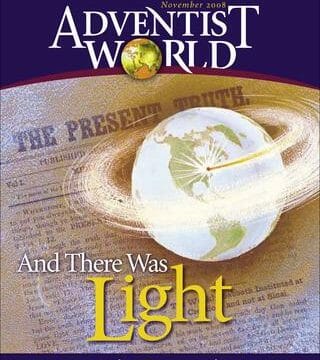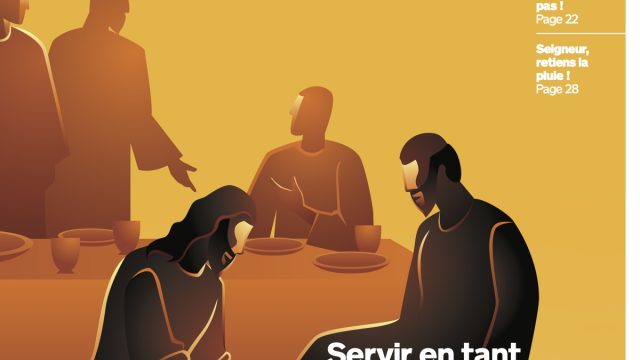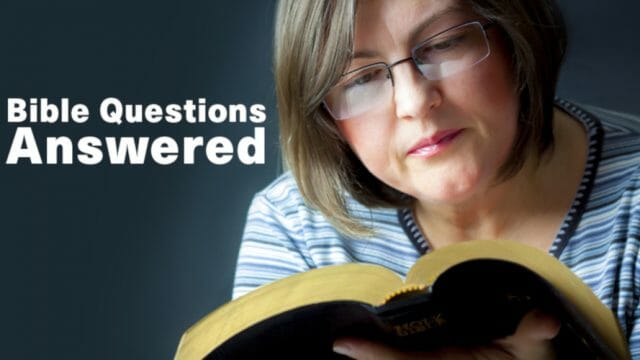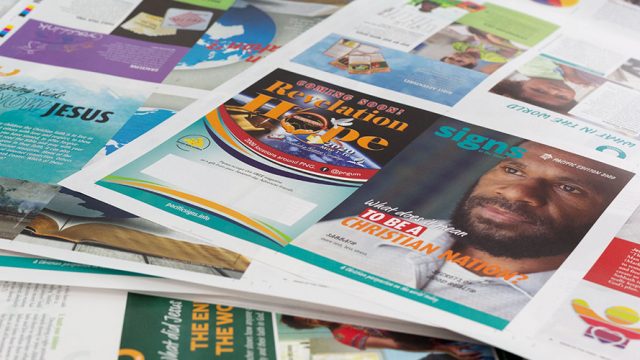Managing editor shares goals and ways it’s changing lives.
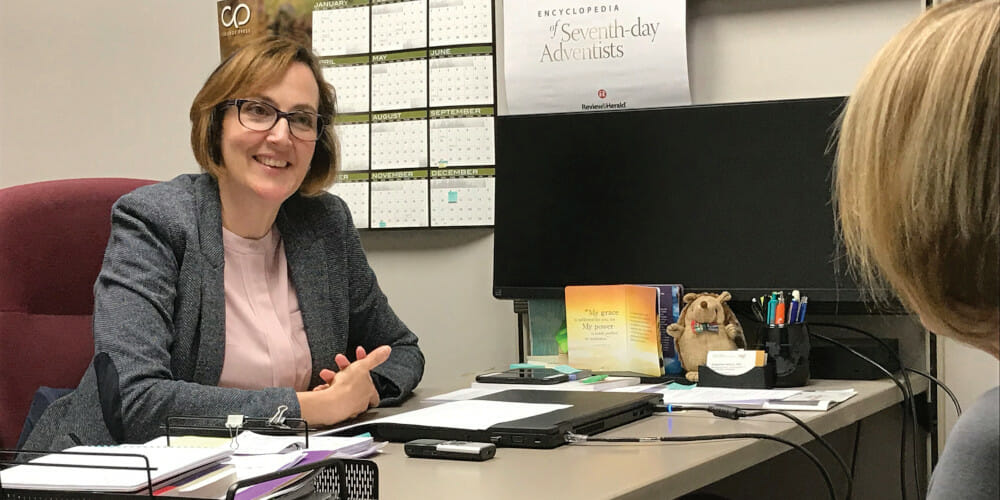
During its Spring Meeting held at the Adventist Church’s world headquarters on April 14, 2015, the General Conference Executive Committee approved a budget for the Encyclopedia of Seventh-day Adventists (ESDA). The ESDA is a brand-new reference work. In May 2018 Dragoslava Santrac, Ph.D., accepted the position of managing editor for the project. Adventist World assistant editor Sandra Blackmer recently talked with Santrac about her ESDA responsibilities, the goals of the project, and the difference it is already making among church members of all ages throughout the world field.—Editors
Describe the responsibilities of your role as managing editor of the ESDA project.
In a nutshell, the managing editor manages and guides the processes and functions required to develop and launch the encyclopedia, including generating continued support and promoting the project by writing articles, making presentations, coordinating selections and workflow of personnel involved in the project development, developing resource processes, and planning for guiding the process to a successful launch.
What has helped to prepare you for this role?
Together with my academic and professional backgrounds [see sidebar], I have to say that the groundwork was led by my parents, who taught me to love God and His church. They also taught me to value hard work, commitment, and integrity.
Since I’ve lived and worked in four [world church] divisions, I’ve gained a broad, global perspective of diverse cultures and the many different ways people live and think. I’ve also learned that there is much more that connects us than separates us.
The ESDA project is under the auspices of the General Conference Archives, Statistics, and Research [ASTR]?
Yes. The project is directed by and based at ASTR. David Trim, director of ASTR, is editor of the ESDA.
Where were you born and raised?
I was born in France and spent the first eight years of my life there. My parents then returned to Serbia, their country of origin. My small village church there of 25 members really shaped me for life. People looked out for each other. I also learned that my life is a testimony that speaks louder than words. That’s something I recognize now as I research the biographies of early Adventists and pioneers.
It’s been two decades since the second revised edition of the Seventh-day Adventist Encyclopedia was published, and more than 50 years since the first edition; so what changes or additional information do you plan to include?
The new encyclopedia is not an update of the Seventh-day Adventist Encyclopedia but a whole new project. Some people may ask, “Why not just update the current encyclopedia? Why a new encyclopedia?”
Writing new articles for the ESDA does not suggest rewriting the history, although it will involve correcting inaccurate information, if such exists in the current encyclopedia. New research will bring a fresh perspective that will speak to contemporary generations of Adventists as well as updated information. The authors will verify the old sources and include new relevant materials.
We are adding lots of new entries. Much church development and growth in numbers and scholarship have happened in 50 years, so the new encyclopedia will embrace and incorporate that growth. We are doing lots of new research, and we hope that at least the printed edition of the encyclopedia will have more than 8,500 articles, which is almost double that of the current encyclopedia. We first are focusing on an online edition, which is scheduled to be launched at the 2020 General Conference session. It will be a free website that will be expanded and updated year by year as the church grows.
What else will be different with this new encyclopedia?
We’ll be including historical data from world regions that previously were left out of the encyclopedia.
Also, even though the authors of the earlier editions tried to present an international worldwide perspective, some feel that it was written mostly from a North American perspective. So we’re drawing on the expertise of thousands of scholars, teachers, and authors worldwide. About 20 assistant editors and others from all 13 divisions and the Middle East and North Africa [MENA] Union Mission are working with us on this project [see sidebar].
Another advantage of worldwide involvement is that the assistant editors can collect materials from their local churches, such as letters and diaries that members keep and never think of sharing unless asked. They can also collect information based on tradition by conducting interviews with surviving relatives or people who know about specific historical events. Sadly, such information can vanish if not put in writing.
Is this involvement with the project making a difference in those regions?
Yes, definitely. Many local churches are being revived because they now believe that what was done or happened in their part of the world matters to the world church, that it is an important part of our church history. People living in remote areas sometimes feel separated from the world church. This project is helping them to feel validated and connected.
Our assistant editor in the South American Division shared with me that he and his students and some young people from local area churches have been working on 45 biographies. It resulted in a revival and reformation for them. The young people told him that they now feel connected to the church and its history. They couldn’t believe there were so many people in their history and local area that had done such wonderful things for God, and that God did great things through them. They now say they must do something for mission, too, or this spirit will die. “Our generation must not allow something like that to happen,” they said. “We have to continue.”
This elevates the ESDA project from just the printed page, from the intellectual level, to a spiritual level because it’s affecting and changing people. We want them to know that it’s not just people such as James White and Joseph Bates who made a difference; so many more are making a difference as well.
In what ways do you see the ESDA as being important to the church?
We don’t want our people to have only snippets of history; we want the encyclopedia to provide a broad picture of God’s leading of His people throughout history. Then we can see where we all fit. We realize, “I am part of a historical community, and I have a role to play.” Seeing a broad picture of God’s leading in history helps us see our place—and not only for the present; it gives us hope for the future.
It also fosters strength and identity of individuals and the church as a community. When we see gradual development and unfolding of God’s purposes throughout history, we realize that we are going to get through whatever current challenges and problems we may be experiencing. God is in control.
Are you collaborating with other departments in the General Conference building?
Yes, and outside entities as well. Our institutional partners include the Ellen G. White Estate, the Center for Adventist Research at Andrews University, Adventist Digital Library, Adventist Review Ministries, Adventist International Institute of Advanced Studies, Centro Universitario Adventista de Sao Paulo, Friedensau University, Oakwood University, and Washington Adventist University. They are helping us in an advisory role and providing peer-review feedback.
Who previously headed the project?
Benjamin Baker. He continues to support the project as an author and reviewer. I’m deeply grateful to him for the work he did and for his ongoing support.
Is there anything else that is important for our readers to know?
Yes. We invite researchers, teachers, students, and members with expertise on many given subjects—not only scholars in history and theology—to contribute articles on topics not yet covered by our invitation-only editorial process. We welcome help in other areas too, including peer reviewing; proofreading; conducting interviews to collect historical information based on overall traditions; and submitting missionary letters, photographs, and artifacts. We are also open to considering new research and unplanned articles. This project is not just for scholars; it’s for everyone.
To contact Dragoslava Santrac, e-mail encyclopedia@gc.adventist.org, go to www.adventistarchives.org/encyclopedia, or follow ESDA on Twitter @EncyclopediaSDA.
The ESDA team
The ESDA main office: David Trim, editor; Dragoslava Santrac, managing editor; Patricia Brauer, office assistant
Regional editors: Nathaniel Walemba (ECD), Daniel Heinz (ESD), Stefan Hoeschele (EUD), Felix Cortez, Glenn Phillips (IAD), Farid El Khoury (MENA), Douglas Morgan (NAD), Bruce Lo (NSD), Adolfo Suarez (SAD), Passmore Hachalinga (SID), Barry Oliver (SPD), Remwil Tornalejo (SSD), Gordon Christo (SUD), Paul Lockham (TED), Onaolapo Ajibade (WAD)
Thematic editors: Michael Campbell, Frank Hasel, Tim Poirier, Alberto Timm
Subeditors and regional editors’ assistants: Carlos Flávio, John Fowler, Denis Kaiser, Samuel London, Daniel Plenc, Dennis Pettibone, Gluder Quispe, Renato Stencel, Melanie Wixwat, Chigemezi Wogu
Consultant editors: division secretaries or chosen by the division
Disciplinary consultant editors: Bruce Anderson, Lisa Beardsley-Hardy, Lisa Clark-Diller, Cheryl Doss, Bruce Lo, Duane McBride, Ekkehardt Mueller, Dan Shultz, Ella Simmons, Karl Wilcox
Editorial Board: Artur Stele, chair; David Trim, secretary; managing editor; selected General Conference representatives; division consultant editors; General Conference president, secretary, and treasurer
Santrac’s Experience and Background
Dragoslava Santrac, Ph.D., is managing editor (May 2018 to present) of the Seventh-day Adventist Encyclopedia project, headquartered at the General Conference in Silver Spring, Maryland, United States, and an adjunct professor of religion at Washington Adventist University, Silver Spring, Maryland, United States (2015 to present).
Academics
B.A. in Theology from Belgrade Theological Seminary, Serbia (1997)
Master of Arts in Religion from Andrews University, United States (1999)
Doctorate in Old Testament Studies from Greenwich School of Theology, United Kingdom (affiliated with North-West University, South Africa) (2013). Santrac’s dissertation, “Sanctuary Cult in Relation to Religious Piety in the Book of Psalms,” was published by Lambert Academic Publishing (2013).
Experience
Editor of Zivot i Zdravlje and Teofil for South-East European Union (1999–2006)
Registrar of the Belgrade Theological Seminary (1999–2006)
Fifteen years of teaching (Belgrade Theological Seminary, Serbia; University of the Southern Caribbean, Trinidad, West Indies; Washington Adventist University, United States)
Associate editor of the Seventh-day Adventist International Biblical-
Theological Dictionary (2016–present)
Has lived and worked in four church territories: Inter-European Division, Trans-European Division, Inter-American Division, and North American Division
Family
Husband, Aleksandar, chair of the Department of Religion at Washington Adventist University. The couple has two daughters.


